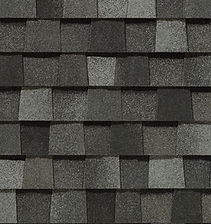What Really Happens After a Hailstorm in Maryland (And What You Should Know Before Filing a Claim)
- Staff
- Jun 2
- 3 min read
Updated: Jun 3
If you live in Maryland and a hailstorm just rolled through your neighborhood, you’ve probably already noticed the aftermath—contractors knocking on doors, trucks flooding the streets, and flyers promising free roof replacements. It can feel like a frenzy. Suddenly, everyone’s telling you your roof is damaged, and that you must file a claim with your insurance company right away.
But here’s the truth: most modern roofs, especially architectural shingles, can withstand typical Maryland hailstorms without any real damage.

The Reality About Hail and Architectural Shingles
Not all hail causes damage. Architectural shingles—the type installed on most modern homes—are built to endure. In most cases, hail needs to be at least 1.25 inches in diameter (about the size of a half-dollar) before it has a chance of damaging these shingles.
So why are so many contractors telling you otherwise?

The Storm Chaser Tactic: Cast a Wide Net
A lot of the contractors that show up after a storm are what we call “storm chasers.” Their business model is simple: tell as many people as possible to file claims and let the insurance companies sort it out. If enough people file, some will get approved, and they get jobs. It’s a numbers game.
These contractors often use vague language like “soft hits” or “bruised shingles,” and rely on the fear of missing out—“Your neighbors are filing… shouldn't you?”
But filing a claim without proof of actual damage can backfire.
Don’t File a Claim Unless You’re Sure
Every time you file a claim, it goes on your record—even if no damage is found or the claim is denied. This can affect your premiums or how your insurer views your future claims.
Before you even consider contacting your insurance company, make sure you:
See real pictures of your roof from the person who inspected it
Understand what the photos show (hail strikes, granule loss, dents, etc.)
Confirm the hail was actually large enough to cause roof damage
If there’s no clear, visible evidence, hold off. There’s no need to risk your record over nothing.
What About Aluminum Siding?
Now, hail and aluminum siding are a different story. Aluminum siding dents much more easily than roofing shingles. Even hail smaller than 1 inch can leave visible dimples on aluminum surfaces. These dents are usually obvious and permanent—no guessing required.

At JP Construction, we work with plenty of homeowners who have siding damage, but no roof damage. In fact, this is why we focus heavily on neighborhoods with aluminum siding—because there’s often a real, claimable issue that needs attention.

Don’t Be Scared Into Filing a Claim
We get it—no one wants to hear they have a damaged roof. But that fear can lead homeowners to file claims they don’t need to. And storm chasers know how to play on that fear.
Instead of rushing into action, take a moment. Get a real inspection from someone you trust. Ask for photos. Ask questions. And only take the next step if you’re confident the damage is real.
Need an Honest Roof or Siding Inspection?
At JP Construction, we offer straightforward assessments with photos and no pressure. If you don’t have damage, we’ll tell you. If you do, we’ll walk you through your options—one step at a time.
If you live within our Maryland service area, call us now at (877) 846-9566 or schedule your free inspection online.






















